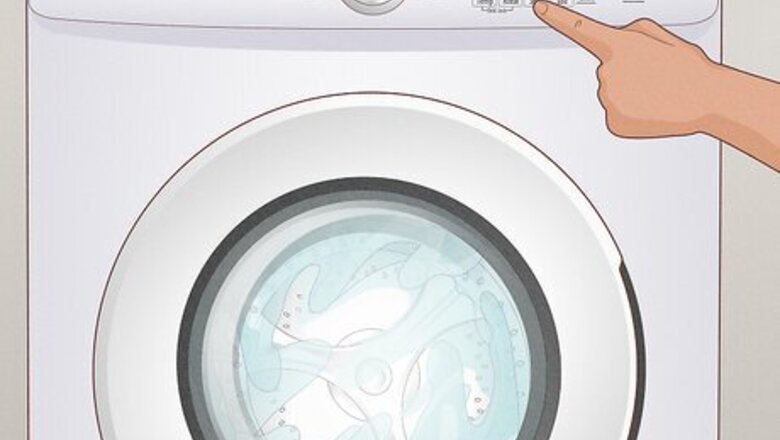
views
Using the Self-Clean Cycle to Remove Mold & Mildew
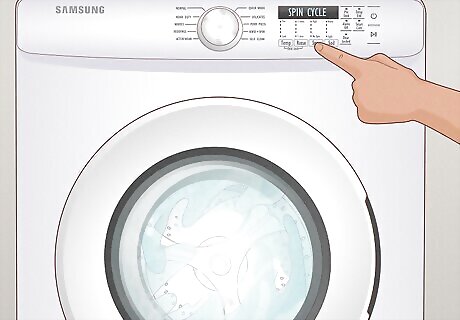
Run an empty Spin cycle to remove excess water from the machine. Remove any clothing from the washer first, then press the "Spin-only" button. If necessary, adjust your spin level before pressing "Start." Power the unit on if your model doesn't have this setting. Press and hold the spin key for 3 seconds. Select the spin level and press "Start." Tip: Run an empty spin cycle between loads of laundry to keep your drum fresh and prevent mold/mildew.
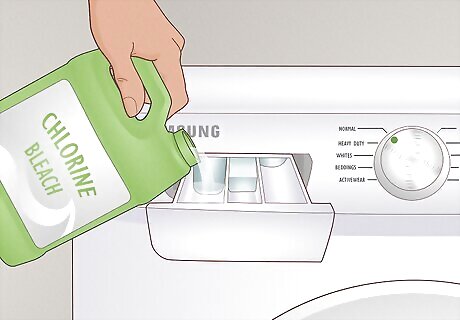
Pour chlorine bleach into the detergent compartment. Samsung recommends using bleach during a Self-cleaning cycle if you're dealing with mold and mildew inside the washer drum. Pour ⁄4 c (2.0 fl oz) of bleach into the dispenser. If your machine doesn’t have a dispenser, add 1 c (8.0 fl oz) of bleach directly into the machine’s tub. For front-loading washers, dampen a microfiber cloth and wipe the inside door of the machine with bleach.
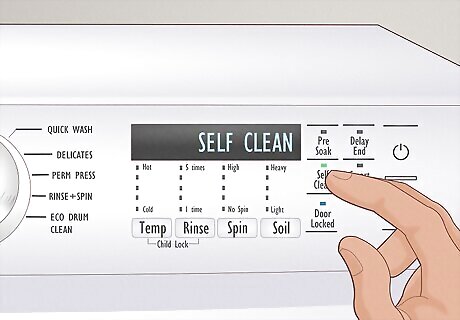
Push the "Self-clean" button to activate Samsung's self-cleaning cycle. Look for the "Self-Clean" button on the machine's display screen and press "Start." The cycle will prevent mold by cleaning areas where moisture and detergent residue accumulates. Samsung's Self Clean cycle is also called Pure Cycle or Self Clean+ on different models. The self-cleaning mode is often overlooked because of its different names and discreet flashing icons. The Self Clean Reminder logo is a tub with a small diamond shape on the bottom right. It'll flash red after 40 loads.
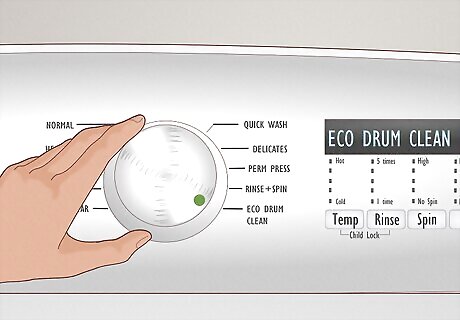
Select "Eco Drum Clean" mode to deep-clean the drum and gasket. Select the "Cycles" button on a top-loading Samsung and then "Eco Drum Clean." Press "Start" to begin the cycle. This cycle removes mold and dirt that may accumulate inside the drum. For front-loading machines, empty the drum and press "Power." Then, turn the cycle dial, select the Drum Clean+ course, and press "Start." This cycle should be performed monthly. However, the Eco Drum Cleaner+ light will flash after 40 washes. If your machine doesn’t have this mode, run a regular warm or hot water cycle.
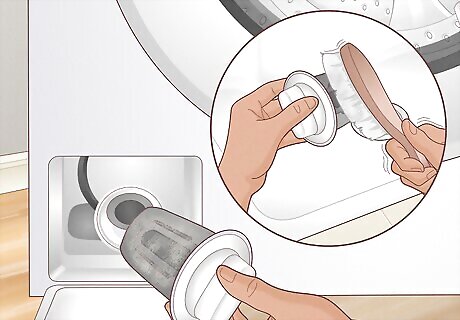
Scrub the pump filter to remove mildew odors in front-loading machines. One hour after the Self-clean cycle, open the pump filter by pressing the cover on the bottom left of the machine. Place a container underneath to capture any water. Hold the hose, twist the cap, and twist the filter counterclockwise. Rinse under warm water and brush off any debris with a brush. Reinsert and twist it clockwise. Wait at least 1 hour before removing the pump filter to avoid a burn injury.
Using Household Cleaners
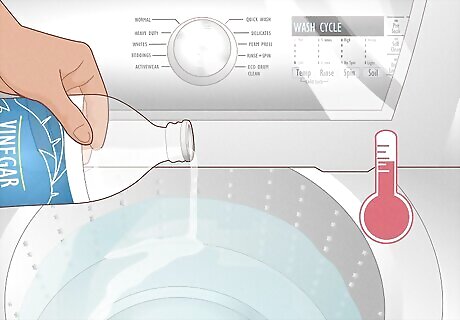
Pour 4 c (32 fl oz) of white vinegar and run a hot wash cycle. Vinegar is a great way to eliminate mold, mildew, bacteria, and hard water buildup. Empty the tub of any clothes before pouring four cups of white vinegar inside a front or top-loading machine. Run the longest and hottest cycle available. Then, clean the inside of the washer with a damp sponge or run a Rinse cycle to remove lingering vinegar. For a more thorough clean, add ⁄2 c (4.0 fl oz) of baking soda.
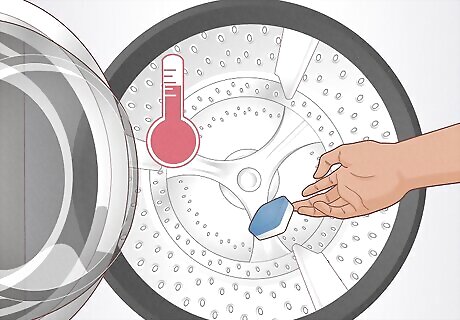
Alternatively, add a commercial cleaner tablet or liquid to an empty tub. Clean a washer with commercial cleaners that come in liquid, tablet, or powder form. Follow the manufacturer's instructions on the product. Then, run a normal cycle on the hottest water setting.
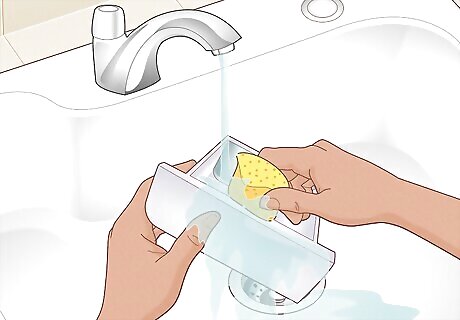
Rinse out the detergent compartment and scrub it with a sponge. Open the detergent drawer and press the release lever towards the back. Press and pull the drawer out at the same time. Rinse the drawer under running water and use a sponge or toothbrush to lift any buildup. Slip the drawer back in place when it's clean. Take a cloth or the same toothbrush to clean the slot inside the machine. For the Samsung Model WF50A8800AV, hold the release lever and pull the drawer simultaneously. Remove the tops of both compartments using the pull tabs. Then, clean with a soft brush and water. Wipe it dry with a paper towel or cloth.
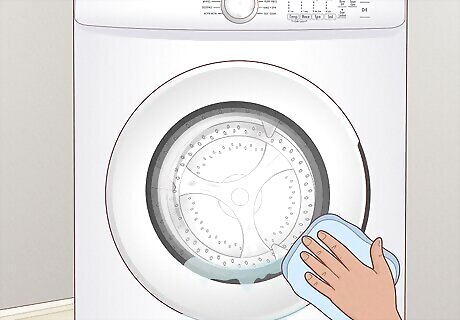
Wipe the exterior surface of your machine to remove debris or spills. The exterior of your washer is just as important as the interior. Any residue can cause surface blemishes. Dampen a microfiber cloth with mild detergent and clean affected areas in a circular motion. Afterward, use a damp cloth to clean off the area and dry it with another cloth.
Preventing Mildew & Odor
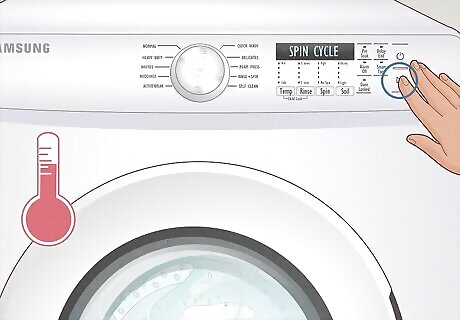
Flush the machine with a warm or hot water cycle between washes. If you normally wash your clothes with cold water, use warm or hot water to break down soil, detergent buildup, and lingering bleach. Follow your normal laundry routine, except don't add any detergent or fill the machine with clothes. Select your water temperature and press "Start."
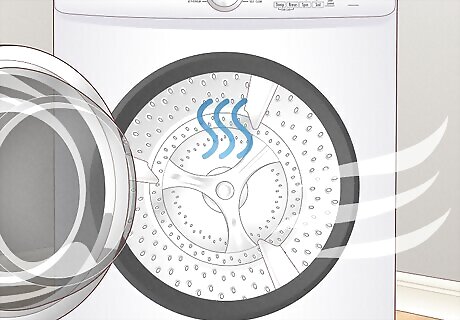
Allow the washing machine to air dry after each wash. Leave the lid or door open to allow moisture to evaporate between washes. This will help prevent mold, mildew, and bacteria buildup that can cause your clothes to smell.















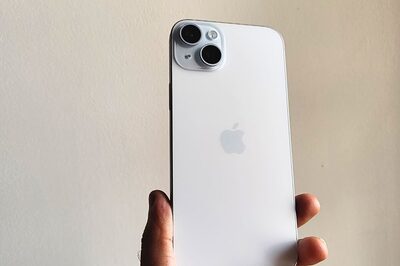




Comments
0 comment